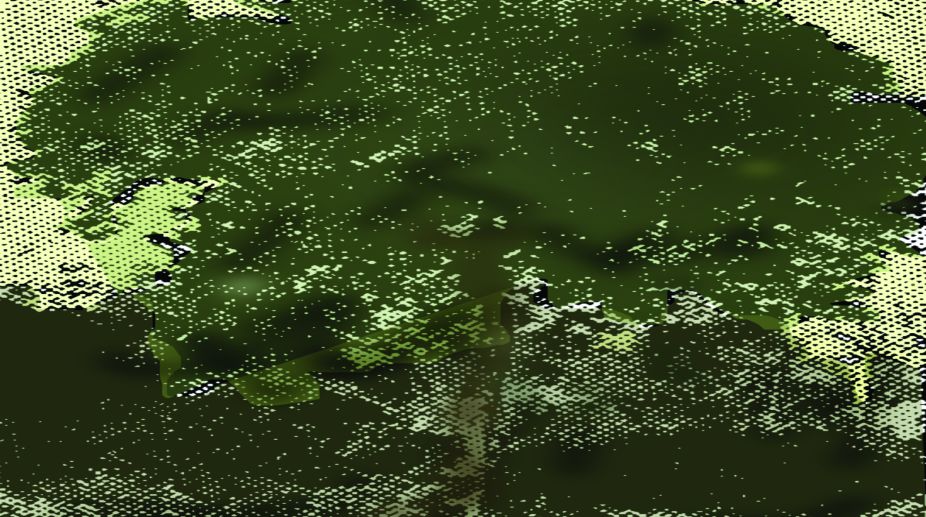In the Ramayana and other Puranas there is mention of a tree, the bark of which was used by forest dwellers as a garment. Now, there are many trees and shrubs belonging to the Malvaceae, the Sterculiaceae and the Tiliaceae whose barks yield strong fibres, useful for being made into ropes and coarse fabric ~ jute and Deccan hemp are examples of such plants ~ but in our Puranas it is nothing man-made, but the natural fabric obtained from a tree’s bark, that is mentioned. People just stripped the bark of the tree, cleaned it and dried it and then wore it as a garment.
Unlikely, doesn’t that seem? But there is such a giant tree in our forests (see-illustration), and its tough, thick inner bark, which can be peeled in long, wide strips, is quite half an inch thick when cleaned and sundried ~ it looks more like thick felt with a loose, wavy weave than anything else, but of course it is entirely natural and made up only of vegetable fibres.
Advertisement
The bark is stripped in large pieces, and then well beaten and shaken, dried in the sun, then beaten and dried again, and the process repeated till the outer bark and all adherent tissues are removed and only the thick mat of fibres remains. This treatment is quite necessary, for the milky juice of the bark is intensely poisonous and has to be completely eliminated ~ and the bark does not take kindly to retting.
I do not think there is the slightest doubt that this treated fibremat was worn as a garment by forest dwellers in the old days ~ the Tamil name of the tree, marauri, suggests such use. Apparently, they sliced the thick, fibrous mat to render it less heavy and unyielding, or else used the bark of young trees which provides a much more plaint and thinner mat. The inner bark of mature trees is used to make thick, extra-strong sacks, and also makes an excellent mattress ~ provided it has been cleaned thoroughly.
This is the notorious Upas tree of Malayan and Javanese legends, the tree of death, poisoning all life around for considerable distances. The botanist calls it Antiaris toxicaria and largely discounts legend, but he recognizes the potent poison in its latex in his specific name for the tree.
Even shorn of all romance, it is a most remarkable tree, easily the largest in our evergreen forests (full grown, it is 250 ft. high!), with a milky juice that is definitely poisonous, and a distinctive inner bark. Gamble says that Indian specimens of the tree are less poisonous than those from Malaya, but the tree attains as magnificent a stature here as anywhere else.
This fig, Antiaris toxicaria belongs to the family of the mulberry ~ all our figs (including the sacred peepul and the lordly banyan), and the jack, belong to the same family. But while the latex of figs and the jack yields only a very sticky lime (and rubber, in the case of the rubber fig), in the Upas tree it yields an arrow poison.
The milky juice is found in all the green parts of the tree, but apparently the fruits are innocuous. Anyway, flying foxes and other frugivorous bats flock to the tree when it fruits, and feast on the bounty.
This was published on 26 June 1967











